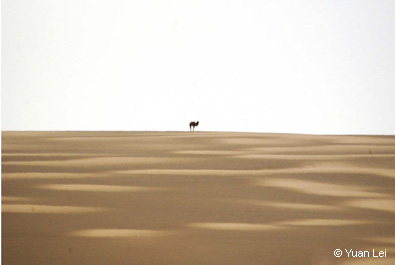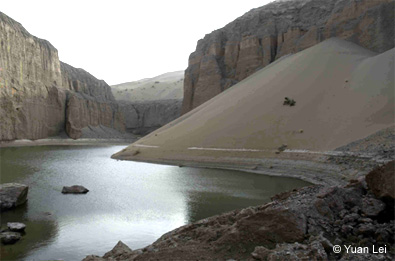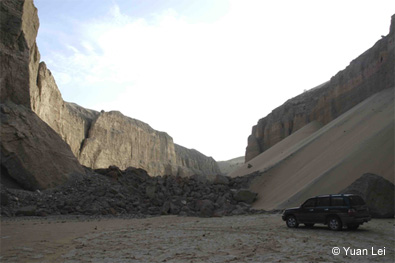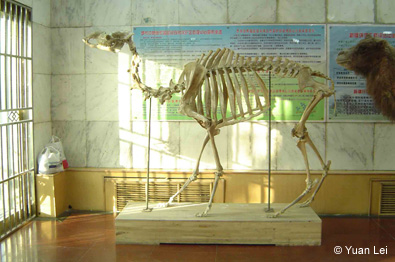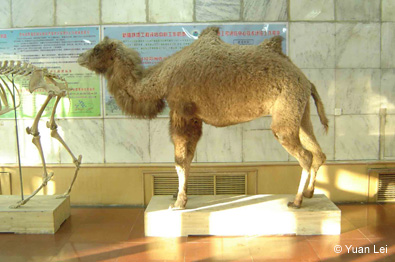Yuan Lei, the EDGE Fellow we support to study the Critically Endangered Bactrian camel in China, has been carrying out his usual monitoring surveys in recent months, but has also succeeded in surveying a rather inhospitable part of the Lop Nur National Nature Reserve – the Kumutage sand desert.
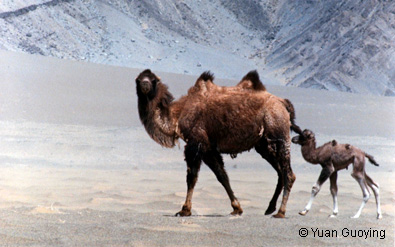
One of the eight biggest sand deserts in the world, the Kumutage is on what is suspected to be an important wild camel migration route between the south and north, and as such Yuan Lei and his team set about surveying the region for the first time. To their relief, they found that the sand was more firm than expected in most areas, and therefore it was possible to drive and complete the survey relatively easily. However, in the south-west the sand dunes are high and soft, and therefore difficult to navigate.
The team saw nine camels during the Kumutage desert survey, confirming the desert as a migration route for the species. One of these camels had been seen previously in a different part of the reserve, the Honggou Valley, where sweet spring water draws camels to drink.
However, Yuan Lei had a surprise during his most recent visit to the Honggou Valley – a landslide had formed a dam in the valley spring (see photos below), creating a lake approximately 800 metres long and 150 metres wide. Yuan Lei suspects that a flood may have caused the dam to form, although other possible explanations include an earthquake or strong winds.
Luckily, Yuan Lei does not believe that the damming of the stream will have a detrimental effect on the wild camels in the reserve, and on his visit he saw evidence that camels were still using the area, including footprints and camel fur found on bushes and trees nearby.
And finally, you may recall that last Christmas Yuan Lei sent a blog reporting his team’s attempt to rescue an injured wild camel. The camel was in a remote area of the reserve, and it took a coordinated effort to reach the site. Sadly, in spite of the teams’ hard work, the camel died from her wounds.
However, in order to gain some positive from the unfortunate death of the camel, the Xinjian Environmental Protection Bureau, who manage the Lop Nur Wild Camel Nature Reserve, has had the body made into two educational specimens, which were recently finished. Yuan Lei said:
“Last year we tried to rescue a wounded wild camel. We transport it out of the reserve, but she died on the way. So we decided to make it to specimen by bone and skin. After one year’s hard work, we finished those two specimens. One is make of wild camel’s bone and other specimen make of the wild camel’s skin and hair.
“Now those two specimens become very good materials to showing people what wild camel is.”
If you would like to support the research and conservation work of EDGE Fellows, including Yuan Lei, then become an EDGE Champion, or donate here.
